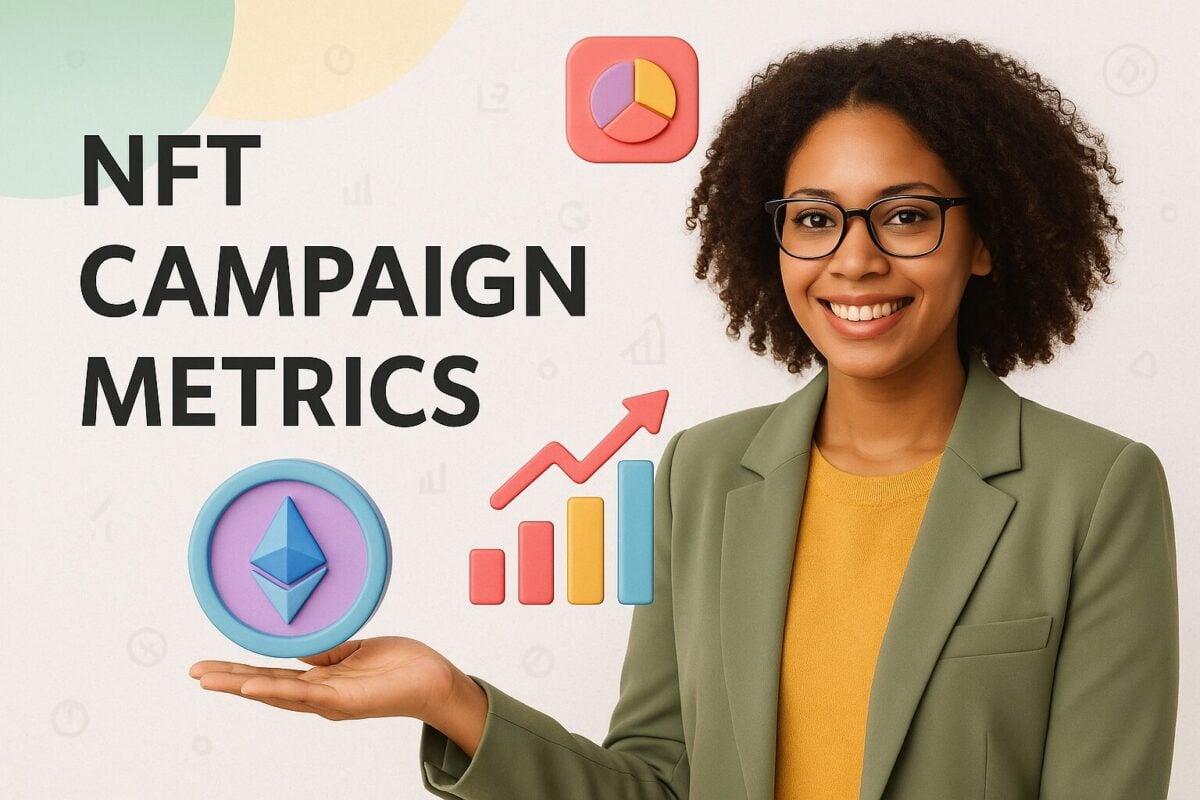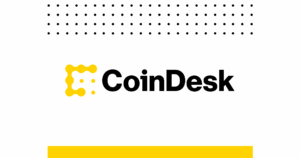Measuring NFT Success: Beyond Floor Price to True Value Metrics

Unlocking the True Value of NFT Campaigns: Beyond Floor Prices
Understanding the Real Impact of NFT Marketing
What if the effectiveness of your NFT campaign is rooted not in fleeting floor-price changes but in genuine community involvement and the activation of utility? Our analysis of NFT drops reveals two significant trends: brands that incorporate real benefits—such as exclusive access, gamified experiences, and real-world events—tend to outperform those that merely release digital images. Additionally, influencer-led initiatives that align with key liquidity moments maintain elevated trading volumes and royalty revenues.
- Understanding the Real Impact of NFT Marketing
- Defining Authentic ROI in NFT Campaigns
- Primary Sale Metrics: Key Indicators of Success
- Mint Conversion Rate
- Average Mint Price
- Sell-Through Rate (STR)
- Whitelist-to-Mint Ratio
- Optimizing Gas Costs
- Instant Secondary Interest
- Secondary Market Metrics: Actionable Insights
- Total Trading Volume
- Unique Traders & Wallet Growth
- Royalty Income & Cumulative Secondary Revenue
- Floor Price Dynamics vs. Spread
- Community Engagement Metrics: Building Lasting Connections
- Active Community Size
- Engagement Velocity & Retention
- Event & Utility Redemption Rates
- On-Site and Off-Chain Engagement: Bridging the Gap
- Traffic Source Attribution
- On-Page Engagement
- Email & Push Notification Performance
- Social Share & Virality Velocity
- Synthesizing Metrics for Scalable NFT Campaigns
- Frequently Asked Questions
- What platform should I use to streamline minting and capture primary-sale conversion data?
- How can I gauge secondary-market momentum in sports-focused NFT campaigns?
- Which NFT marketplaces provide robust dashboards for end-to-end campaign monitoring?
- Can “.eth” or branded NFT domains amplify your influencer-driven engagement metrics?
- What’s the role of collection-generator tools in scaling influencer drop campaigns?
- How do real-estate NFT platforms measure utility engagement differently?
- Which engagement metrics matter most for NFT game collaborations?
- How can music NFT marketplaces inform royalty and brand-lift tracking?
- About the Author
In light of this, marketers are pondering:
- How can we leverage secondary-market data as proactive tools to enhance influencer brief optimization?
- What engagement trends, both on-site and off-chain, can forecast mint conversion rates before price surges?
This article presents a comprehensive, data-centric framework that encompasses primary sales, secondary markets, and community engagement, enabling brands and agencies to evaluate success beyond mere floor prices.
By aligning each key performance indicator (KPI) with specific influencer workflows, you can transform raw blockchain data into scalable growth mechanisms that yield both financial returns and enhanced brand equity.
Defining Authentic ROI in NFT Campaigns
In influencer-driven NFT initiatives, the return on investment (ROI) should be assessed across three distinct campaign phases:
- Awareness Seeding
- Utility Activation
- Community Amplification
Each phase is guided by tailored influencer briefs and KPIs.
Awareness Seeding utilizes a tiered influencer approach (macro, mid-tier, micro) with UTM-tagged links to measure increases in mint conversions. Utility Activation focuses on tracking influencer-led redemption actions, such as RSVPs for token-gated events, while Community Amplification evaluates how audiences sourced through influencers engage on platforms like Discord and Twitter Spaces, as well as their impact on secondary-market discussions.
This structured framework ensures that every collaboration phase—invitation, engagement, and advocacy—aligns with measurable financial, engagement, and brand-lift outcomes, transforming vague floor-price discussions into actionable performance insights.
Primary Sale Metrics: Key Indicators of Success
Successful influencer-driven mint phases require a well-defined “Seed & Scale” strategy. During the Seed phase, allocate 10-15% of the total supply to various influencer tiers—macro influencers receive custom promo codes, mid-tier influencers share UTM links in carousel posts, and micro influencers encourage community sign-ups via Discord invites.
The Scale phase involves broad influencer outreach across multiple channels, capitalizing on fear of missing out (FOMO) and social proof. To track these cohorts, utilize an influencer CRM with on-chain attribution plugins.
Mint Conversion Rate
The mint conversion rate is a crucial KPI, representing the ratio of unique wallet visits to actual mint transactions. High conversion rates indicate a seamless user experience, compelling utility offerings, and effective demand channels. To calculate this, integrate on-chain mint logs with front-end analytics by dividing total mints by unique visits to the mint landing page.
Average Mint Price
The average mint price provides insights into revenue optimization for tiered utility drops. If early-bird tiers sell out quickly at premium prices, it reflects both scarcity-driven demand and a willingness to pay. Monitor the performance of each tier—gold, platinum, and ultra-elite—in real-time using smart contract event listeners.
Sell-Through Rate (STR)
The sell-through rate measures the percentage of total supply sold within a specific timeframe, such as the first 24 hours. A low sell-through rate may indicate demand fatigue or insufficient pre-drop engagement, necessitating adjustments to whitelist volume, influencer seeding, or clarity on utility roadmaps. Brands should aim for a sell-through rate of at least 70-80% within the first 24 hours to maximize momentum and social proof.
Whitelist-to-Mint Ratio
This metric assesses the effectiveness of your whitelist strategy. A high ratio suggests that whitelist members are genuinely interested, while a low ratio may indicate oversaturation or misaligned targeting. Refining criteria, such as requiring social-proof tasks or micro-influencer referrals, can enhance whitelist quality.
Optimizing Gas Costs
Gas cost optimization is another factor influencing primary sale ROI. Keep track of average gas fees paid by users during minting compared to market medians. High gas costs can deter conversions; consider implementing gas-station tools or layer-2 solutions to minimize friction.
Instant Secondary Interest
Capture instant secondary interest by measuring post-mint listing activity. If a significant portion of newly minted NFTs is relisted immediately, it may indicate short-term flipping rather than long-term holding intent. While secondary flips aren’t inherently negative, a balanced ratio—around 20-30% instant relisting—suggests both liquidity provision and holder confidence.
To effectively manage influencer mint referrals at scale, integrate a dedicated Influencer-Mint Module that automatically syncs promo codes and UTM links with on-chain events. Pair this with Discord Bot automations to streamline whitelist allocation and real-time badge assignment for successful referrals.
For post-launch analysis, utilize a unified dashboard—built with tools like Tableau or Dune Analytics—to consolidate influencer cohort data, on-chain mint logs, and front-end clickstreams. This setup allows campaign managers to identify top-performing collaborators, reallocate budgets mid-campaign, and refine brief templates for future drops.
Secondary Market Metrics: Actionable Insights
Secondary market metrics provide actionable insights that should directly inform your influencer campaign lifecycle. By aligning post-mint influencer activities with secondary liquidity waves, you can transform temporary hype into sustained engagement and royalty revenue. This strategic alignment requires marketers to coordinate influencer content calendars, scheduling price-check videos, unboxing streams, and exclusive secondary-market AMAs during periods of heightened trading activity.
Total Trading Volume
This metric measures the total trade value across secondary marketplaces within defined timeframes (e.g., 24, 72, and 168 hours). Segment volume spikes by influencer cohort using hashed referral links embedded in secondary-listing alerts.
Unique Traders & Wallet Growth
Track the number of new addresses interacting with your collection post-launch and correlate these influxes with specific influencer activations. An increase in unique traders indicates broader market appeal driven by influencer audiences.
Royalty Income & Cumulative Secondary Revenue
Aggregate smart contract royalty events to quantify revenue streams accruing to the brand or artist. Analyze royalties by marketplace and overlay influencer promotion timelines to identify which collaborators yield the highest royalty returns.
Floor Price Dynamics vs. Spread
Monitor the gap between low-end listings and bid prices to assess market depth. Encourage influencers to create “price-check” content during low-spread periods, incentivizing audience bids and narrowing the bid-ask gap for improved price stability.
By integrating secondary-market insights into your influencer campaign feedback loop, you gain real-time visibility into which creators drive the most impactful liquidity surges and royalty accruals. This intelligence allows marketers to dynamically reallocate budgets, elevate high-performing influencers for subsequent phases, and schedule targeted “liquidity boosts.”
Community Engagement Metrics: Building Lasting Connections
In NFT campaigns powered by influencers, community engagement is essential for fostering connections among holders, amplifying user-generated content (UGC), and supporting long-term value creation. Influencer briefs should extend beyond transactional promotion, incorporating elements like Discord deep dives, co-hosted Twitter Spaces, and UGC challenges that highlight token utilities.
Active Community Size
Monitor growth in key channels—Discord, Telegram, Twitter Spaces—attributable to influencer referrals. Utilize invite-specific links or Discord bots to track sign-ups by collaborator. A vibrant, expanding community indicates successful conversion of audiences into engaged holders.
Engagement Velocity & Retention
Calculate the ratio of returning participants to new joiners in your primary community channels over 7- and 14-day cohorts. Overlay these cohorts with influencer activation dates to determine which creators foster engagement and drive repeat interactions.
Event & Utility Redemption Rates
Assess participation in token-gated events—both virtual and in-person—by measuring RSVP-to-attendance ratios and post-event feedback volumes. Utilize on-chain proof-of-attendance to quantify how many holders engage with branded experiences, reinforcing utility as a retention lever.
When community metrics are combined with influencer performance data in a centralized dashboard, marketers can pinpoint which creators excel at community engagement, whether through high RSVP conversion, peak AMA participation, or superior retention rates.
On-Site and Off-Chain Engagement: Bridging the Gap
On-site and off-chain engagement metrics illuminate the specific touchpoints where creator audiences interact with brand assets, connecting social buzz with on-chain actions. By integrating UTM-tracked links in influencer content, marketers can analyze every stage of the conversion funnel—from click-through on a mint announcement to wallet-connect attempts.
Traffic Source Attribution
Implement granular UTM parameters in all influencer assets—story swipe-ups, link-in-bio posts, and affiliate prompts—to trace conversion paths from specific creators to mint page visits. Combine these with real-time dashboards to attribute mint transactions back to influencer cohorts and adjust tactics mid-campaign.
On-Page Engagement
Monitor key behavioral metrics on your mint landing page, such as time on page and scroll depth. Influencer briefs should include A/B testing of creative elements and utility explanations, with predetermined thresholds that trigger rapid creative adjustments.
Email & Push Notification Performance
Incorporate influencer-exclusive promo codes in email sequences sent to pre-signup audiences. Track open rates, click-through rates, and subsequent wallet connections to evaluate influencer content resonance.
Social Share & Virality Velocity
Utilize social listening tools to quantify share counts, hashtag mentions, and engagement velocity for influencer-generated content. Correlate spikes in virality with on-site conversion increases to identify which content formats drive cross-channel amplification.
By systematically linking UTM-tagged influencer posts, on-site behavioral analytics, and off-chain engagement signals to on-chain mint actions, marketers gain a comprehensive view of campaign performance. This enables rapid iteration of influencer briefs, focusing on top-performing content formats and reallocating budgets to creators whose audiences show the strongest progression through the funnel.
Synthesizing Metrics for Scalable NFT Campaigns
The success of NFT drops requires more than temporary floor-price spikes. By integrating primary-sale, secondary-market, community, on-site/off-chain, and brand-lift metrics into a cohesive framework, marketers can transform raw data into strategic insights.
Each KPI—mint conversion rate, royalty yield, community retention, UTM attribution, and sentiment lift—serves as a guiding light for refining influencer briefs, reallocating budgets, and optimizing creative strategies. This closed-loop approach turns your creator network into a dynamic growth engine, capable of sustaining engagement, amplifying brand equity, and unlocking ongoing revenue streams.
As you refine your strategies, a playbook of best-in-class activations will emerge, featuring tiered collaborator models, timed content surges, and utility-driven UGC challenges. Ultimately, this disciplined, data-driven methodology elevates NFT campaigns from speculative drops to repeatable, scalable marketing vehicles, bridging emerging Web3 channels with established influencer-marketing practices and delivering measurable ROI for brands and agencies alike.
Frequently Asked Questions
What platform should I use to streamline minting and capture primary-sale conversion data?
Consider using a comprehensive solution like the NFT Makers suite, which offers built-in analytics for mint conversion rates, gas-fee tracking, and UTM-tag integration, allowing you to directly attribute primary-sale performance to specific influencer cohorts.
How can I gauge secondary-market momentum in sports-focused NFT campaigns?
Utilize analytics from leading sports NFT marketplaces that report trading volume by team or player collection, enabling you to correlate post-mint influencer activities with spikes in bid-ask spreads and total trade values.
Which NFT marketplaces provide robust dashboards for end-to-end campaign monitoring?
Platforms like OpenSea, Rarible, and LooksRare offer on-chain dashboards and webhook integrations to feed your business intelligence tools, allowing you to track both primary and secondary KPIs in real-time.
Can “.eth” or branded NFT domains amplify your influencer-driven engagement metrics?
Integrating NFT domains into your campaign—by issuing token-gated subdomains for whitelist access—enables you to track unique visits, badge redemptions, and utility activations linked to each influencer’s referral.
What’s the role of collection-generator tools in scaling influencer drop campaigns?
Using an NFT Collection Generator accelerates batch mint workflows and standardizes metadata, while built-in CSV export of token IDs allows you to map mints back to specific influencer promo codes for cohort-level conversion analysis.
How do real-estate NFT platforms measure utility engagement differently?
Real-estate NFT companies often include on-chain deeds or virtual walkthrough access; you can track RSVP-to-attendance ratios and token-gated property views as utility redemption rates, providing deeper holder engagement insights than simple token transfers.
Which engagement metrics matter most for NFT game collaborations?
In NFT games, measure in-game asset usage, level-completion rates, and secondary trades of game NFTs, then align those with influencer-generated UGC to identify which creators drive the highest play-to-earn conversions.
How can music NFT marketplaces inform royalty and brand-lift tracking?
Platforms like the Music NFT Marketplace provide royalty-split reports and listener engagement statistics, enabling you to correlate influencer-led drop announcements with spikes in play counts, secondary sales, and resulting royalty income.
About the Author
Olya Apostolova is a key writer on the sales team at Influencer Marketing Hub. She brings her expertise to our content creation, crafting articles that meet high-quality standards and reflect her deep understanding of social commerce and digital marketing, offering valuable insights to readers.







